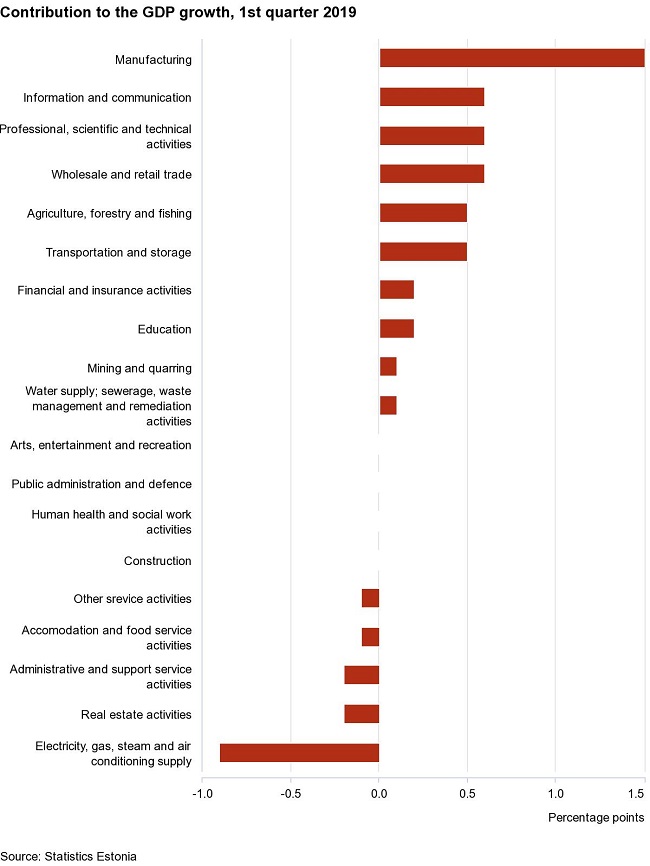Economics, Estonia, GDP, Good for Business
International Internet Magazine. Baltic States news & analytics
Thursday, 25.12.2025, 02:42
Estonian economy grows 4.5% in Q1 2019
 Print version
Print versionSeasonally and working day adjusted GDP grew 0.5% compared to the previous quarter and 4.6% compared to the 1st quarter of 2018.
Economic growth was driven by manufacturing. The last time that manufacturing had such an impact was four years ago, in the 2nd quarter of 2015. Nevertheless, economic growth in the 1st quarter was broad-based, as five other economic activities made notable positive contributions. These were information and communication; professional, scientific and technical activities; wholesale and retail trade; agriculture, forestry and fishing, and transportation and storage. The value added in construction, which had driven economic growth for the last two and a half years, did not increase in the 1st quarter, remaining at the previous year’s level. The only significant negative impact on economic growth came from electricity, gas, steam and air conditioning supply.

Domestic demand grew 4.6% in the first quarter. The slower growth compared to the previous quarters was mainly on account of household final consumption (2.8%). The fast growth of gross fixed capital formation, which had started at the end of the previous year, continued in the 1st quarter, at 20.4%. This was primarily the result of investments by nonfinancial enterprises into transportation equipment, and machinery and other equipment. Household investments into dwellings grew notably as well.
The exports of goods and services grew 4.6% in the first quarter. The exports of goods grew 6.9%, the fastest pace in the last two years. Biggest contributions to growth came from the exports of coke, petroleum products and computer, electrical and optical equipment. The exports of services, which have usually grown faster than the exports of goods, experienced a slight decline (-0.4%). This was the result of the decline of exports of construction and freight rail transport services. The imports of goods and services grew 3.8%. The import of goods grew 4.8%, largely due to the imports of metal products and electrical equipment. The imports of services grew 0.5%. The share of net exports in GDP was 3% in the first quarter of 2019.
In the 1st quarter, both the number of employed persons and worked hours increased. As a result, the productivity per person employed grew 2.7% and the productivity per hours worked grew 3.3%. The growth of unit labour cost was the same as the GDP growth rate, at 4.6%.








 «The Baltic Course» Is Sold and Stays in Business!
«The Baltic Course» Is Sold and Stays in Business!

